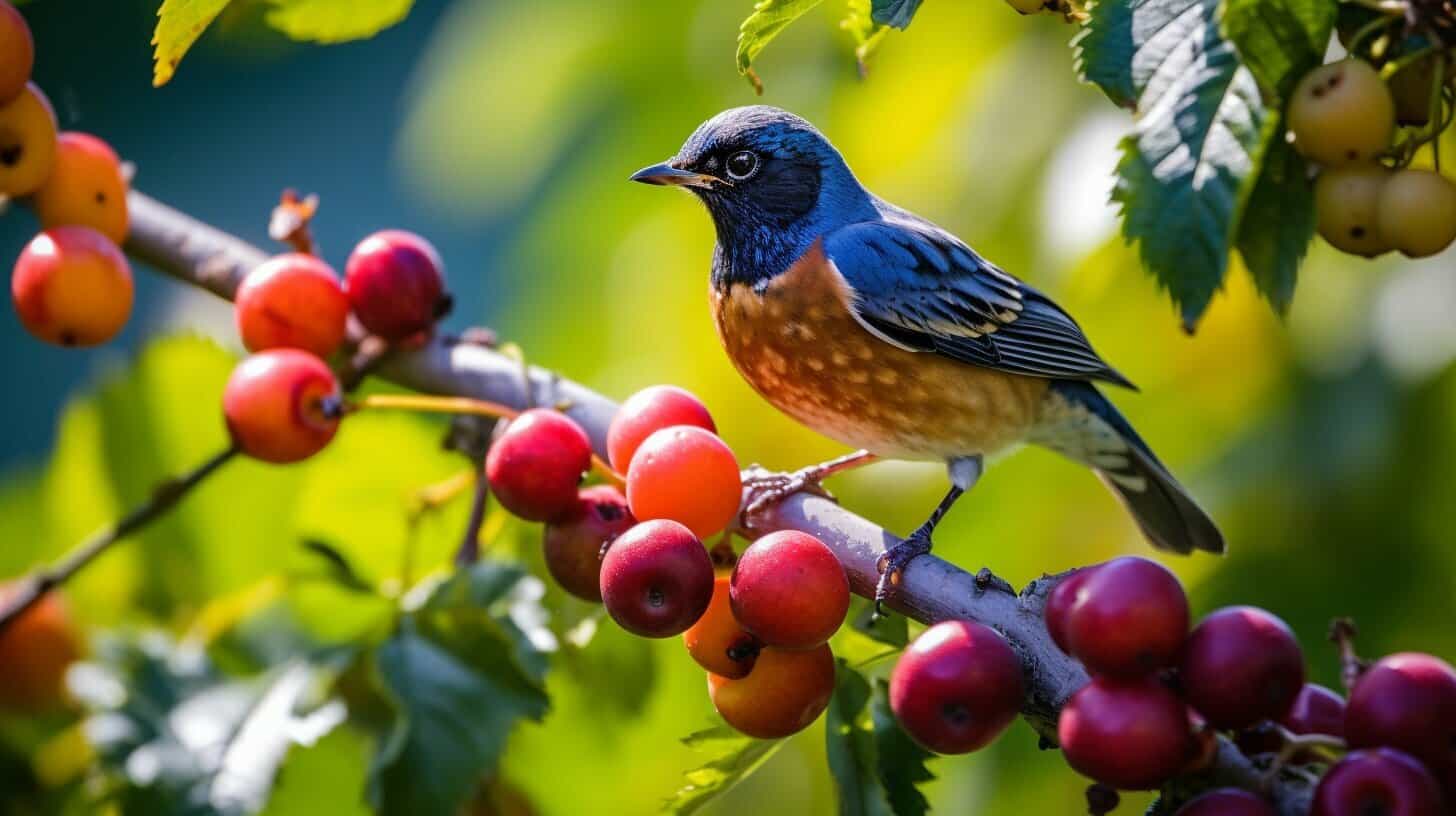Welcome to our friendly guide on whether kakarikis can eat plums. As a responsible pet owner, ensuring your feathered friend has a healthy and balanced diet is a top priority. In this article, we will explore the safety and benefits of feeding plums to kakarikis, alongside their overall dietary needs to help you make informed decisions about their nutrition.
Kakarikis are renowned for their love of fruits and vegetables, but is plum consumption safe for them? Let’s find out!
Can kakarikis eat plums? Kakarikis can indeed eat plums. When offering plums to kakarikis, it’s essential to provide them in moderation and ensure they’re free from pesticides or harmful chemicals. The fruit should be ripe, washed thoroughly, and the pit removed to prevent any choking hazards. Remember, as with any new food, it’s always best to introduce it gradually and observe for any adverse reactions.
Key Takeaways:
- Kakarikis can eat plums, but it is important to do so in moderation and with consideration for their overall dietary needs.
- Plums offer potential health benefits to kakarikis, but there are also potential safety concerns to consider.
- Consulting a veterinarian and following feeding guidelines is recommended to ensure the safety and wellbeing of your pet kakariki.
Understanding Kakarikis’ Dietary Needs
As a kakariki owner, it’s essential to understand their dietary needs to keep them healthy and happy. A balanced diet for kakarikis should consist of a variety of fresh fruits, vegetables, seeds, and pellets.
Plums are one of the many fruits that can be incorporated into a kakariki’s diet, providing them with essential vitamins and minerals. Plums are rich in vitamin C and K, providing antioxidants that can help boost their immune system and reduce inflammation.
It’s important to note that plums should not be the only fruit in a kakariki’s diet. While they offer many benefits, a varied diet is crucial for their overall health and well-being.
| Nutrient | Amount per 100 grams of Plums |
|---|---|
| Calories | 46 |
| Protein | 0.7 g |
| Carbohydrates | 11.4 g |
| Fiber | 1.4 g |
| Fat | 0.3 g |
| Vitamin C | 9.5 mg |
| Vitamin K | 6.4 mcg |
When introducing plums to their diet, ensure they are ripe and washed thoroughly to remove any pesticides or chemicals. Offer a small amount at first to see how your kakariki reacts, and gradually increase the portion size over time.
In conclusion, plums can be a nutritious and beneficial addition to a kakariki’s diet when offered in moderation alongside a varied diet of fresh fruits, vegetables, seeds, and pellets. However, it’s important to always consult with a veterinarian for any dietary changes or concerns regarding your bird’s health.
Introducing Plums to Kakarikis’ Diet
If you are considering adding plums to your kakariki’s diet, it’s important to introduce them slowly and in small portions. This will help their digestive system adjust to the new food and minimise any potential discomfort.
Start by offering a small piece of ripe plum, removing the pit and any skin. You can gradually increase the amount over a few days to see how your bird tolerates it. It’s important to monitor their reaction to the new food and adjust accordingly.
| Preparation Tips: | Feeding Tips: |
|---|---|
|
|
By following these guidelines, you can safely offer plums to your kakariki and provide them with a nutritious and enjoyable addition to their diet.
Safety Considerations When Feeding Plums to Kakarikis
Feeding your kakariki plums can be a tasty and nutritious addition to their diet, but it’s important to take some safety precautions to ensure your bird’s well-being.
Avoid pesticides or chemicals: When selecting plums for your kakariki, be sure to choose organic or pesticide-free options. It’s best to source plums from a reputable supplier to ensure the fruit has not been treated with any harmful chemicals.
Watch for signs of allergic reactions: Just like humans, kakarikis can have allergies. If you notice any signs of an adverse reaction, such as vomiting or diarrhoea, discontinue feeding plums immediately and seek the advice of a veterinarian.
Moderation: While plums can be a healthy part of a kakariki’s diet, they should be fed in moderation. Too many plums can lead to digestive issues such as diarrhoea or constipation, so it’s important to limit the amount of plum intake to no more than once a week or as recommended by a veterinarian.
Introduce slowly: When introducing plums to your kakariki’s diet, start with small pieces to allow your bird’s digestive system to adjust gradually. Monitor your bird’s behaviour and droppings to ensure they are tolerating the fruit well.
By taking these simple precautions, you can safely add plums to your kakariki’s diet and provide them with a tasty treat that also offers nutritional benefits.
Benefits of Plums for Kakarikis
Plums are a delicious and nutritious fruit that can provide several benefits for your kakariki’s health. Here are some of the advantages of including plums in their diet:
- High in fibre: Plums are an excellent source of dietary fibre, which can help regulate your bird’s digestive system.
- Rich in vitamins: Plums contain vitamins A, C and K, which are essential for maintaining good health in kakarikis.
- Low in calories: Plums are relatively low in calories, making them a good option for kakarikis who require a low-calorie diet.
- Antioxidant properties: Plums contain antioxidants such as polyphenols and flavonoids, which can help protect your bird’s cells from damage caused by free radicals.
- Hydrating: Plums contain a lot of water, which can help keep your bird hydrated and healthy.
It’s important to remember that plums should be consumed in moderation as they can cause digestive problems if eaten excessively. Additionally, some kakarikis may be allergic to plums, so it’s important to introduce this fruit gradually and monitor their reaction.
If your kakariki enjoys plums and shows no signs of negative reactions, then this fruit can be a great addition to their diet. Balancing their plum consumption with other suitable fruits and vegetables ensures a well-rounded and nutritious diet.
Moderation and Variety in Kakarikis’ Plum Consumption
While plums can be a tasty and nutritious addition to your kakariki’s diet, it’s important to remember that moderation is key. Too much of one type of food can upset your bird’s diet and potentially lead to health issues.
It’s recommended to start with small portions of plum and gradually increase as your bird’s tolerance is established. As a general rule, plums should make up no more than 10% of your kakariki’s overall diet.
Remember also to provide variety in your bird’s diet to ensure they receive a range of essential nutrients. Along with plums, you can offer other fruits such as apples, grapes, oranges, and vegetables like carrots and broccoli.
Remember that different birds have different diet requirements, and it’s important to consult with a veterinarian if you have any concerns about your bird’s diet or health. You can safely incorporate plums into your kakariki’s nutritious diet with moderation and variety.
Signs of Plum-related Health Issues in Kakarikis
Feeding plums to your kakarikis can be a nutritious and enjoyable addition to their diet. However, it is important to keep an eye out for any potential health issues that may arise.
If your kakarikis have consumed too many plums, they may experience digestive problems such as diarrhoea or vomiting. Sometimes, they may also develop an upset stomach or show signs of discomfort.
Additionally, some kakarikis may be allergic to plums or other fruits. Signs of an allergic reaction may include swelling, difficulty breathing, or a rash. If you notice any of these symptoms, it is important to seek veterinary care immediately.
Finally, it is important to avoid feeding your kakarikis plums that have been treated with pesticides or other chemicals. These substances can harm your birds and cause serious health problems.
To ensure your kakarikis remain healthy and happy, it is important to introduce plums to their diet gradually and in moderation. If you notice any signs of health problems after feeding plums to your birds, be sure to consult your veterinarian right away.
Alternatives to Plums for Kakarikis
If for any reason you cannot feed your kakariki plums, there are still plenty of safe and nutritious options to choose from. Here are some alternatives you can include in their diet:
Remember, it’s important to offer your kakariki a variety of fruits and vegetables to ensure they are receiving a well-balanced diet. Don’t be afraid to experiment with different foods to find out what your bird enjoys the most.
Additional Considerations for Pet Kakarikis
If you have a pet kakariki, it is important to consider their individual needs and behaviour when introducing plums into their diet. Although plums can be a healthy addition to their meals, some kakarikis may not enjoy the taste or texture of the fruit. Be sure to introduce plums in small quantities and observe your bird’s reaction before increasing the amount.
It is also important to note that pet kakarikis may have different dietary needs than wild kakarikis. While wild kakarikis may have access to a variety of natural foods, pet kakarikis can have a more limited selection. Make sure to consider the overall balance of their diet and consult with your veterinarian if you have any concerns.
If your pet kakariki experiences negative reactions after consuming plums, such as vomiting, diarrhoea, or changes in behaviour, it is important to seek veterinary attention immediately. These symptoms could indicate an allergic reaction or other health issue.
Conclusion
Congratulations! You’ve learned a lot about feeding plums to your kakarikis. While plums can be a nutritious and tasty addition to your bird’s diet, following some guidelines is important to ensure their safety and well-being.
Remember to introduce plums in moderation, avoid any pesticides or chemicals, and balance their intake with a variety of other fruits and vegetables. Keep an eye out for any signs of plum-related health issues and consult a veterinarian if needed.
If you’re unable to feed your Kakarikis plums, don’t worry! There are plenty of other safe and nutritious alternatives to keep them happy and healthy.
It’s important to prioritize your pet’s dietary needs and make informed decisions about their food choices. With the information in this article, you’re well on your way to being a responsible and caring Kakariki owner!
FAQ
Q: Can kakarikis eat plums?
A: Yes, kakarikis can eat plums. However, it’s important to understand their dietary needs and introduce plums to their diet safely and carefully.
Q: What are the nutritional needs of kakarikis?
A: Kakarikis require a balanced and nutritious diet. Plums can provide them with essential nutrients such as vitamins and minerals, which can be beneficial for their overall health.
Q: How should I introduce plums to my kakariki’s diet?
A: When introducing plums to your kakariki’s diet, start with small portions and gradually increase the amount over time. Prepare the plums properly and remove any pesticides or chemicals before feeding them to your bird.
Q: Are plums safe for kakarikis?
A: Plums can be safe for kakarikis if they are prepared and fed correctly. Providing clean and pesticide-free plums is important to avoid any potential allergic reactions or health issues.
Q: What are the benefits of plums for kakarikis?
A: Plums can offer various benefits to kakarikis, including essential vitamins, minerals, and antioxidants. They can contribute to their overall health and well-being.
Q: How much plum should I feed my kakariki?
A: It is recommended to feed plums to your kakarki in moderation. Offer small portions a few times a week and ensure they have a balanced diet that includes other suitable fruits and vegetables.
Q: What are the signs of plum-related health issues in kakarikis?
A: If your kakariki shows any signs of digestive issues, diarrhea, or changes in behavior after consuming plums, it is important to monitor their health and consult a veterinarian if necessary.
Q: What are alternatives to plums for kakarikis?
A: If plums are not available or suitable for your kakariki, you can consider feeding them other safe and nutritious fruits such as apples, pears, or berries. Consult a veterinarian for a more comprehensive list of suitable alternatives.
Q: Can pet kakarikis have plums?
A: Yes, pet kakarikis can have plums. However, it is essential to consider their specific needs, health condition, and any dietary restrictions they may have. Consult a veterinarian for personalized advice.



Have comments or questions about this article? Then get involved!
Spotted an error or something we have missed? Let us know